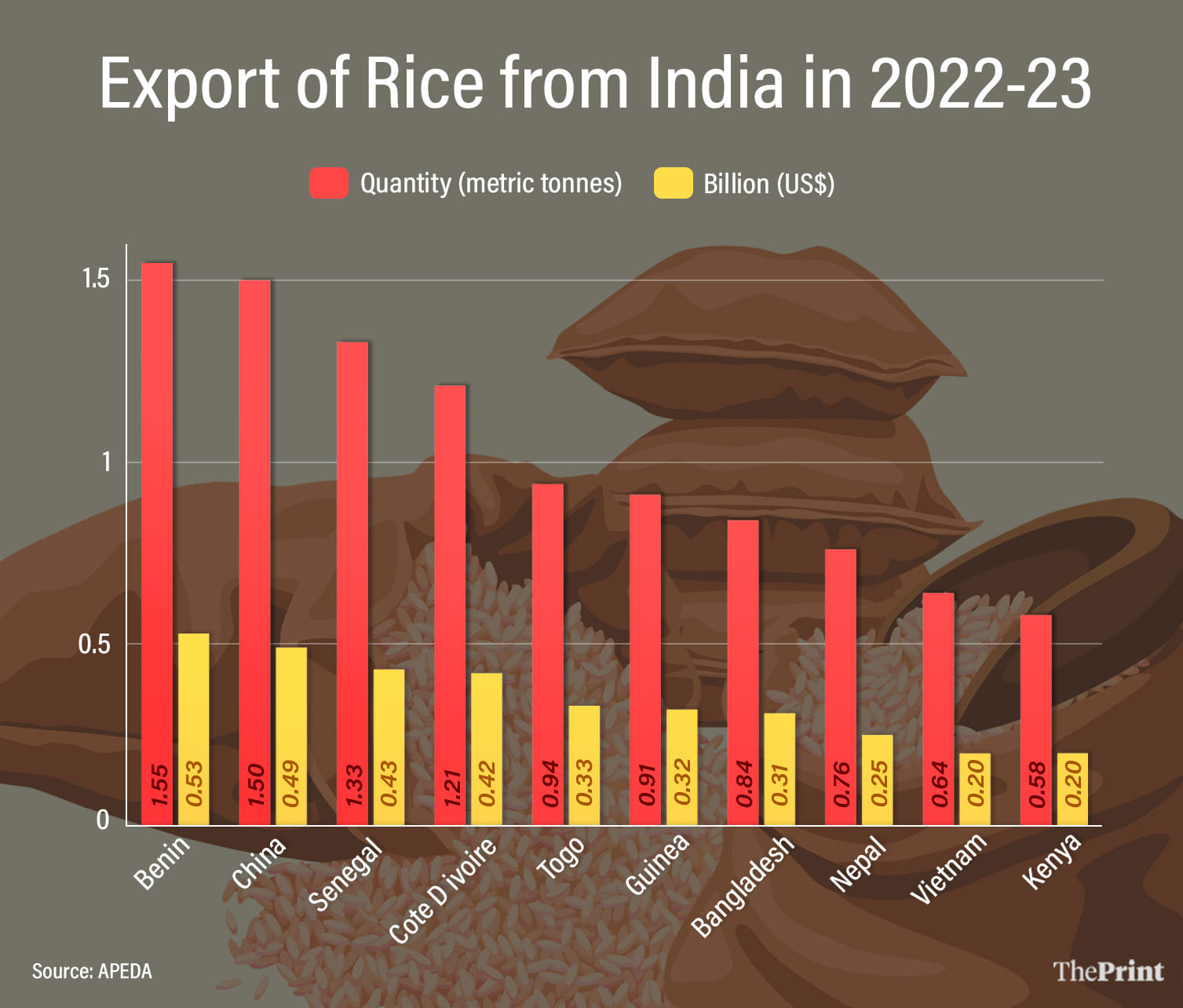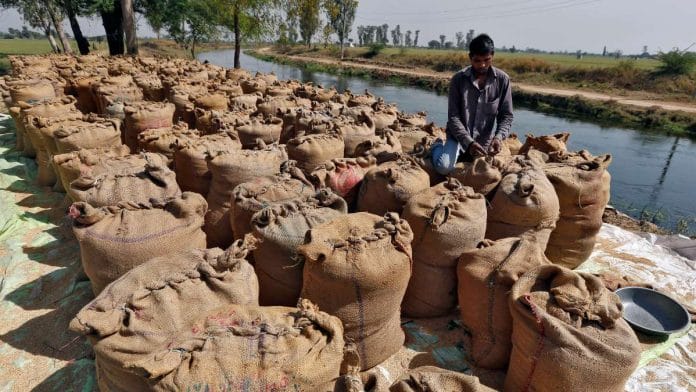In the past two weeks of July 2023, global supplies of wheat and rice — the most commonly consumed cereals — have suffered an unexpected jolt. The poor countries of Africa and West Asia will be badly hit. While economic theorists may find fault with India’s decision to ban the export of white, non-basmati rice (in July 2023) and wheat (in May 2022), government cannot afford to ignore the interest of vast masses for whom wheat and rice are staple food.
In just about a year, since March 2022, adverse weather events have shown that India’s food surpluses are only marginal and therefore in adverse circumstances. India would do everything to check domestic food inflation.
And it is not only wheat and rice that have contributed to food inflation. The prices of vegetables, especially tomatoes, and pulses have also been denting the pockets of Indian consumers.
Also read: Soybean should become the next egg. Needs NECC-type campaign, support
Estimate of food supply and consumption
Food surpluses of the future can be estimated by projecting the production (supply) and demand (consumption). The Government of India does not come out with the yearly estimates of demand for food items.
In July 2016, the Niti Ayog set up a working group to estimate the requirements of rice, wheat, maize, other coarse cereals, pulses, food grains, oilseeds, sugarcane, fruits, vegetables, and animal products such as milk, meat, egg, fish etc. It was tasked to project the demand for domestic use and export.
The working group submitted its report in February 2018. So, the official estimate of consumption of various food items was made more than five years back. The data is that old.
For 2021-22, the demand of rice was projected at 109.28 million tons (mt) while the demand for wheat was projected at 97.12 mt. The US Department of Agriculture (USDA) publishes a monthly report titled ‘World Agricultural Supply and Demand Estimates’ (WASDE) which gives its own estimate of supply and demand of wheat, rice, coarse grains etc in various countries.
For 2023-24, the WASDE projection of Indian wheat production is 113.5 mt and consumption of 108.10 mt.
For rice , the projected production is 129.47 mt while the demand is 110.45 mt. WASDE has projected export of 22.03 mt of rice and 1 mt of wheat.
It is clear that WASDE did not anticipate that export of white non-basmati rice will be banned by India. The ban shows that the government is worried about the real possibility of lower production of rice due to the impact of erratic monsoon and El Nino.
The supply (production) estimates issued by the Department of Agriculture and Farmers Welfare are, however, questioned in the trade circles.
For example, the government’s third advance estimate of wheat production in 2022-23 (marketed in 2023-24) is 112.74 mt. If that is correct, it is difficult to explain an inflation rate of 12.37 per cent in June 2023 even though the export of wheat is banned and there are stock limits imposed under the Essential Commodities Act.
Despite record high procurement of 56.8 mt of rice and 41 mt of rice stock in central pool, rice inflation in June 2023 was 11.78 per cent which would have persuaded the government to impose a ban on export of non-basmati white rice.
Also read: Something ties UP to TN: their inability to spend allocated budget. And parties thrive on it
Export from India
Despite the ban on export of wheat, 4.69 mt of the same was exported in 2022-23 as the government allowed export of the grain for which letters of credit were opened before imposition of ban in May 2023. This year also, some export on diplomatic considerations may be allowed by the government.
In 2022-23, India exported 4.50 mt of basmati rice. Out of 17.78 mt of non-basmati rice, 7.8 mt was parboiled rice. Several poor countries depend on Indian rice for their food demand.

Also read: Rajasthan leaving BIMARU company. On health, education it won’t listen to Yogi, Shivraj
Looking ahead
Despite the ban, we can this year expect export of about 5 mt of basmati rice and about 8 mt of parboiled rice from India. However, several poor nations of Africa and West Asia may still find it difficult to meet their requirement as they depend heavily on Indian non-basmati rice.
India has strategic interest in Nepal and Bangladesh so it is possible that export of white non-basmati to them will be allowed on diplomatic considerations.
Monsoon rains so far have been erratic but the rice crop may still be good as the last 10 days have brought good rains in southern states. If the rainfall from now to August is not too deficient and it is well distributed, the government may feel comfortable about rice production and the ban on export may be reviewed.
With Russian blockage of Black Sea ports, poor nations will find it difficult to import wheat from Ukraine. Last year’s grain deal had enabled export of about 33 mt of food items from Ukrainian ports.
The Russian blockade of Black Sea exports from Ukraine is, therefore, more serious and no end seems to be in sight.
We wish that India provides leadership in G20 meetings to persuade Russia to lift the ban on Black Sea exports so that the food security of poor nations is not compromised.
Hussain is a former Union Agriculture Secretary. Bathla is a Professor at Centre for the Study of Regional Development, Jawaharlal Nehru University, New Delhi. Views are personal.
(Edited by Anurag Chaubey)






